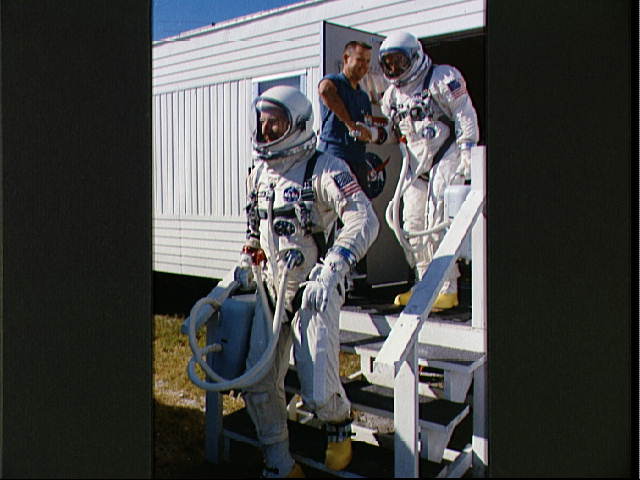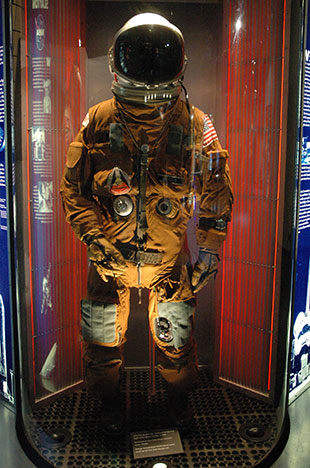Frozen spaceman particles
Discussion
Ok, stupid question no 1: As your space explorers will be getting into the capsule on earth, in the normal atmosphere, the pressure capsule will be full of air at the start of the mission. As the nitrogen is not altered by the respiration process, can't you just bleed in pure oxygen and scrub out the CO2 to maintain the roughly constanst relative concentrations? (or does the nitrogen get absorbed by the human body slowly??). That way you just need O2 system and CO2 scrubbers only?
Max_Torque said:
Ok, stupid question no 1: As your space explorers will be getting into the capsule on earth, in the normal atmosphere, the pressure capsule will be full of air at the start of the mission. As the nitrogen is not altered by the respiration process, can't you just bleed in pure oxygen and scrub out the CO2 to maintain the roughly constanst relative concentrations? (or does the nitrogen get absorbed by the human body slowly??). That way you just need O2 system and CO2 scrubbers only?
That's what was done with Mercury, Gemini and Apollo. However, in order to ensure the astronauts did not develop the bends as the atmospheric pressure in the capsule was reduced during the ascent to orbit, the crew pre-breathed pure oxygen for a number of hours before launch. If you look at film of Gemini and Apollo astronauts walking out to the crew bus as they made their way to the pad, you can see them carrying what looked like a white briefcase. This was a small oxygen kit. This was unplugged from their suits as they entered the capsule and the oxygen hoses from the spacecraft were plugged into their suits instead. This was not necessary with the Space Shuttle. Indeed, from 1984 to the Challenger accident in 1986, Shuttle crews just wore light overalls and simple crash helmets during launch.
Gemini

Apollo

Early Shuttle

Pre-Challenger accident Shuttle

Later Shuttle

Shaolin said:
Eric Mc said:
Air at the surface of the earth is 28% oxygen and 72% nitogen and some other gases.
<pedant mode> Actually 21% oxygen and 78% Nitrogen (approx)</pedant>It just looked so wrong!
The point I was making still stands though.
The aviation industry had gradually acquired knowledge about using pressure suits and pressurising aircraft from the mid 1920s onwards. Essentially, that data was carried over into spaceflight in the late 1950s.
What does become obvious once you look into the technicalities of spacecraft and spacesuits is that the "Hollywood" idea of people being able to don a spacesuit and hop outside a few minutes later is a load of old hogwash. Geting suited up and aclimatised for a spacewalk is a long drawn out and highly technical procedure.
What does become obvious once you look into the technicalities of spacecraft and spacesuits is that the "Hollywood" idea of people being able to don a spacesuit and hop outside a few minutes later is a load of old hogwash. Geting suited up and aclimatised for a spacewalk is a long drawn out and highly technical procedure.
Shaolin said:
<pedant mode> Actually 21% oxygen and 78% Nitrogen (approx)</pedant>
It just looked so wrong!
Actually dry air is 78.09% Nitrogen, 20.95% Oxygen, 0.93% Argon, 0.093% Carbon Dioxide and trace amounts of several other gases, air also contains on average 1% water vapour (Apologies- SCUBA diving nerd here) and its almost always different depending on location and weather.It just looked so wrong!
In a spacecraft it becomes abit complex because you have multiple sources of outgassing, the astronauts, their clothing and all the equipment will outgass in a lower than atmospheric pressue and this has to be recycled/replenished into a safe to breath mixture. If you can imagine all the systems in the ISS that produce gases (toilet, shower, water recycling, electronics etc) juggling the lot must be a royal PITA.
I dive with a closed circuit rebreather and maintaining the mixtuire for one peron is hard enough- 6 people inside something the size of a airliner filled with complex equipment must be a right pain!
I'd imagine NASA have to do a barrage of tests on even the simplest items that go up to check for any gases released due to pressure change and fire.
scubadude said:
maintaining the mixtuire for one peron is hard enough- 6 people inside something the size of a airliner filled with complex equipment must be a right pain!
Well the size of it should at least gives you more time to react, as any changes in concentration will occur much more slowly, unlike in your closed loop breathing circuit where you only have a few litres of volume?Gassing Station | Science! | Top of Page | What's New | My Stuff


